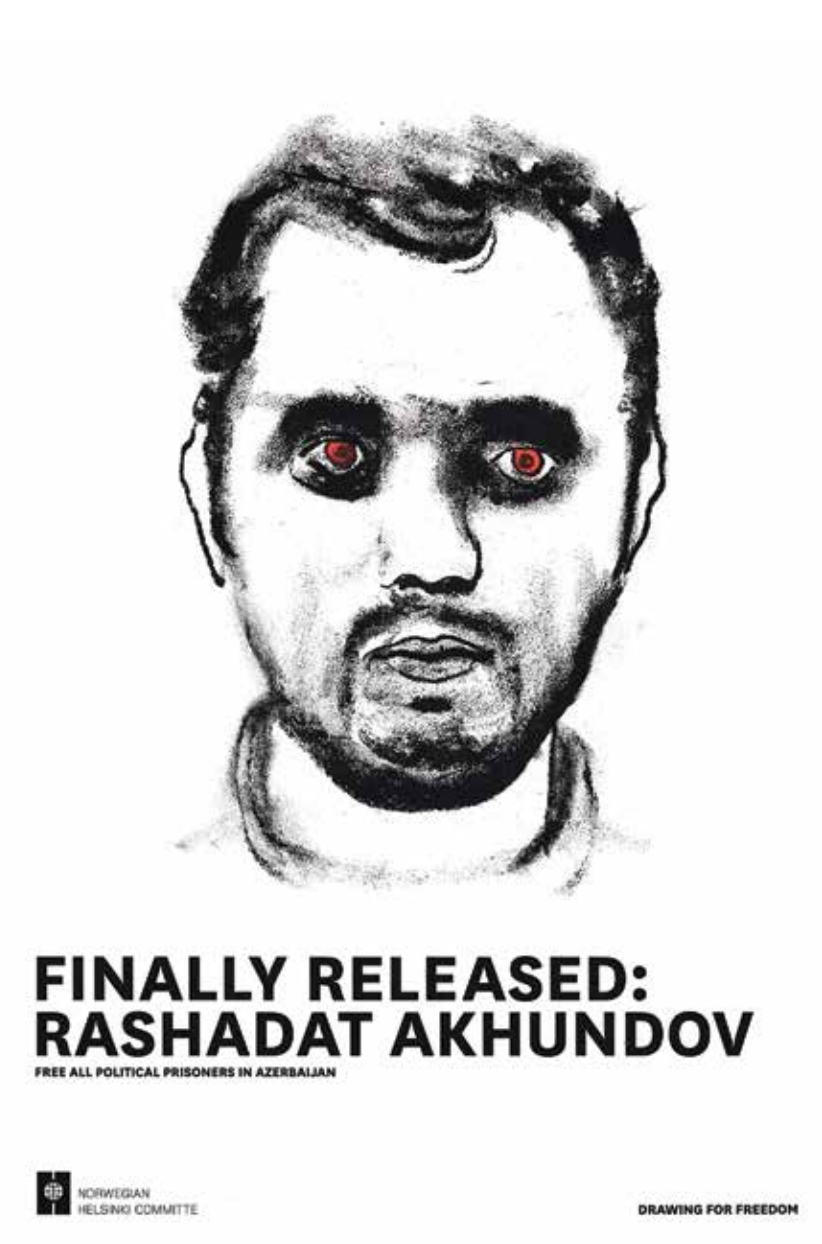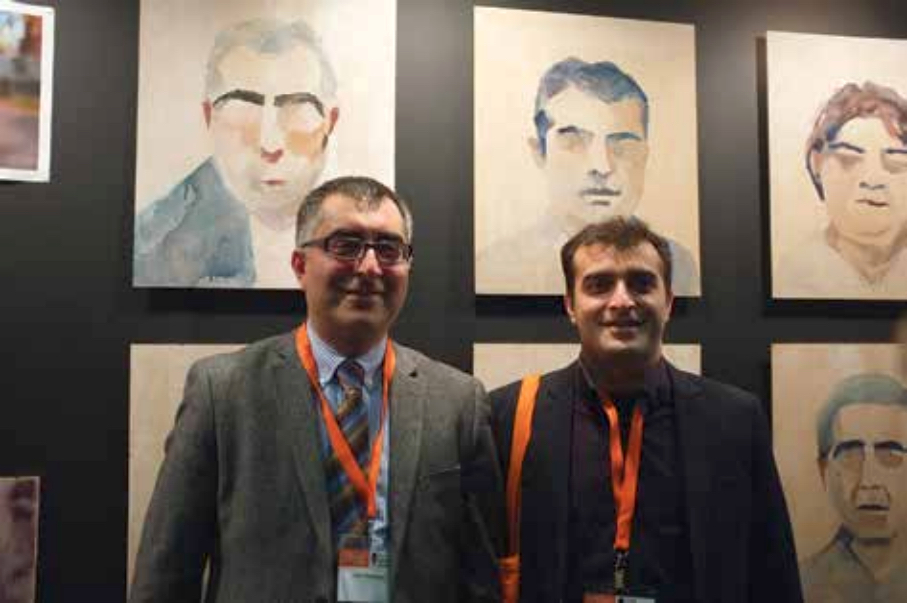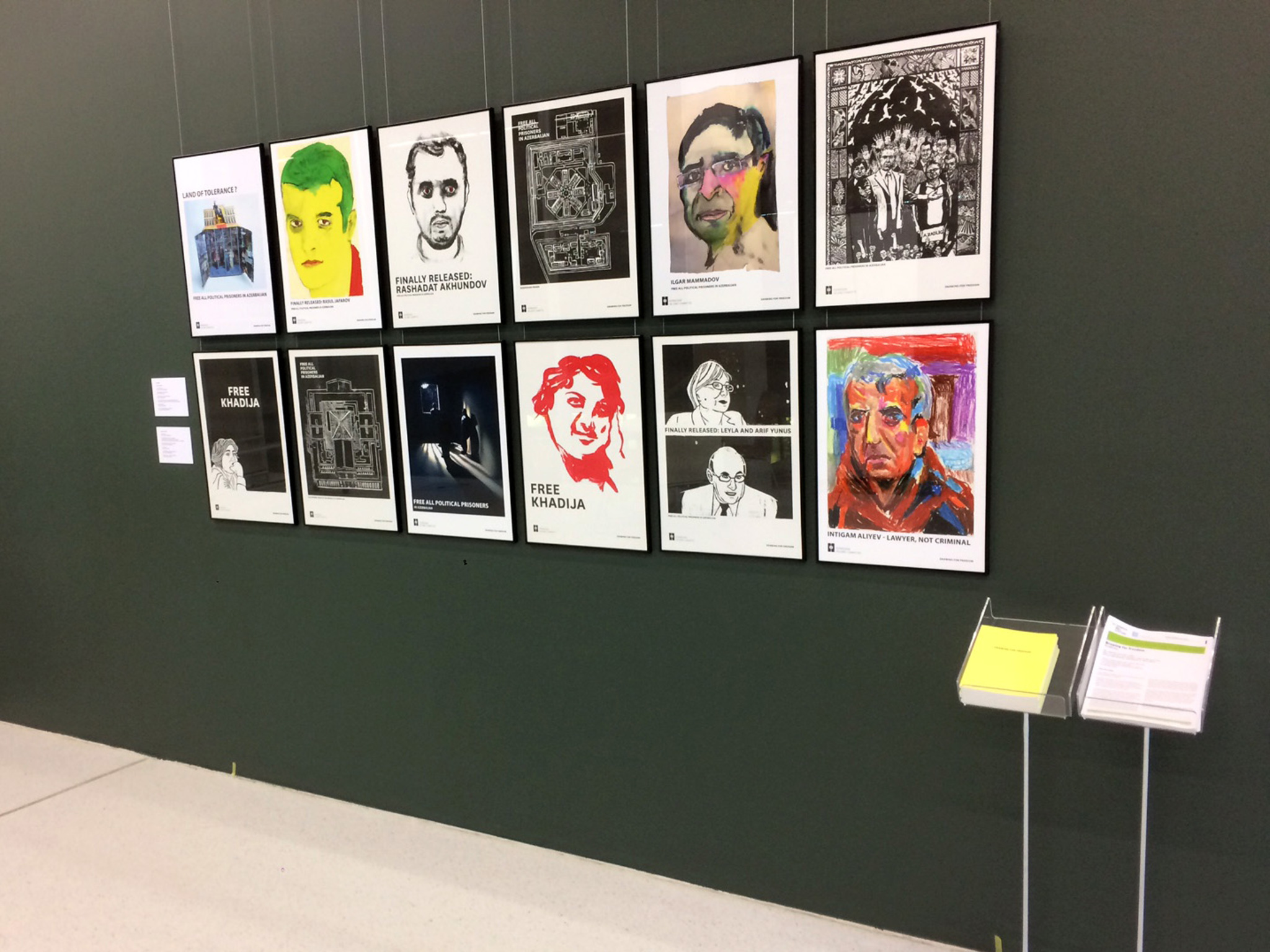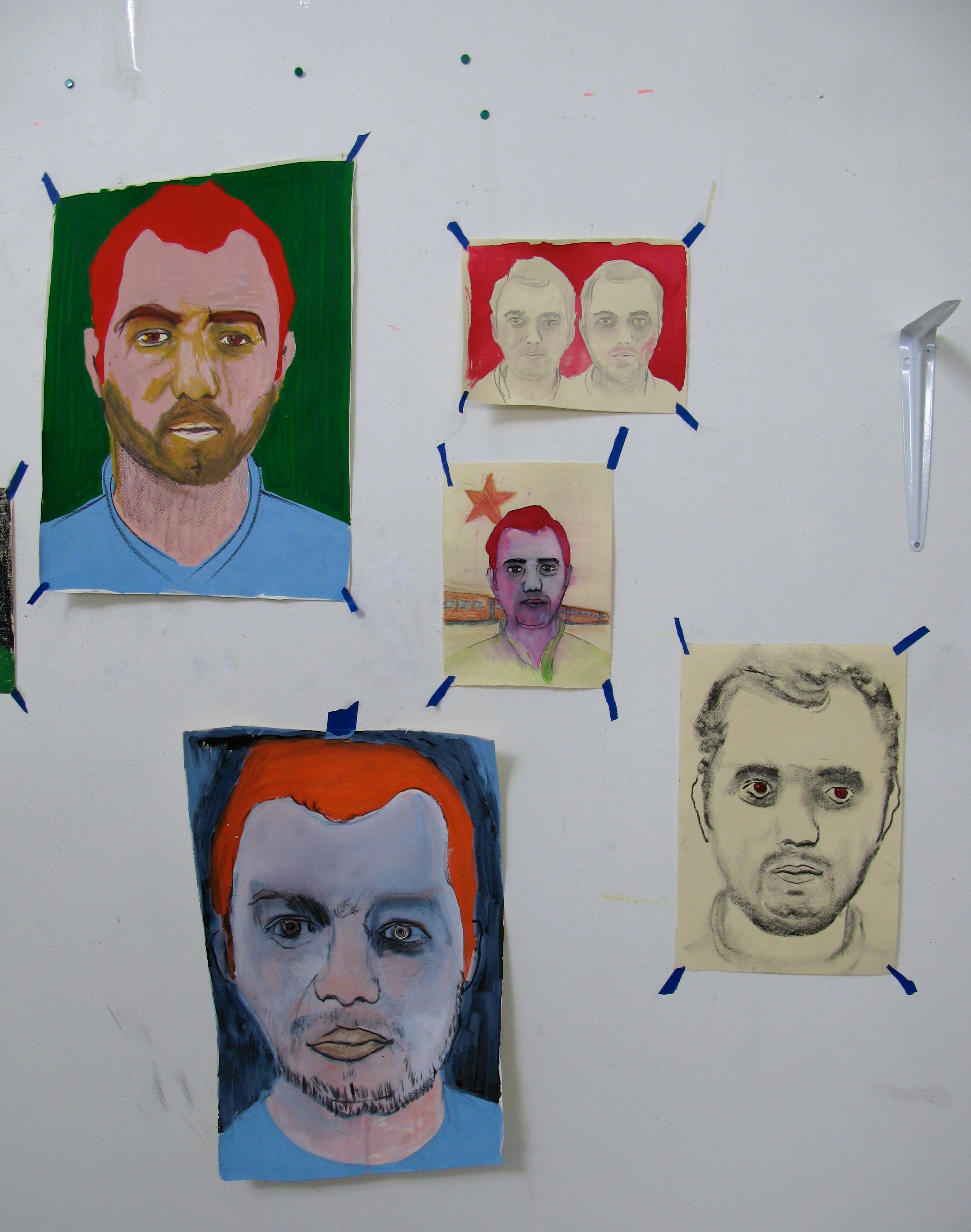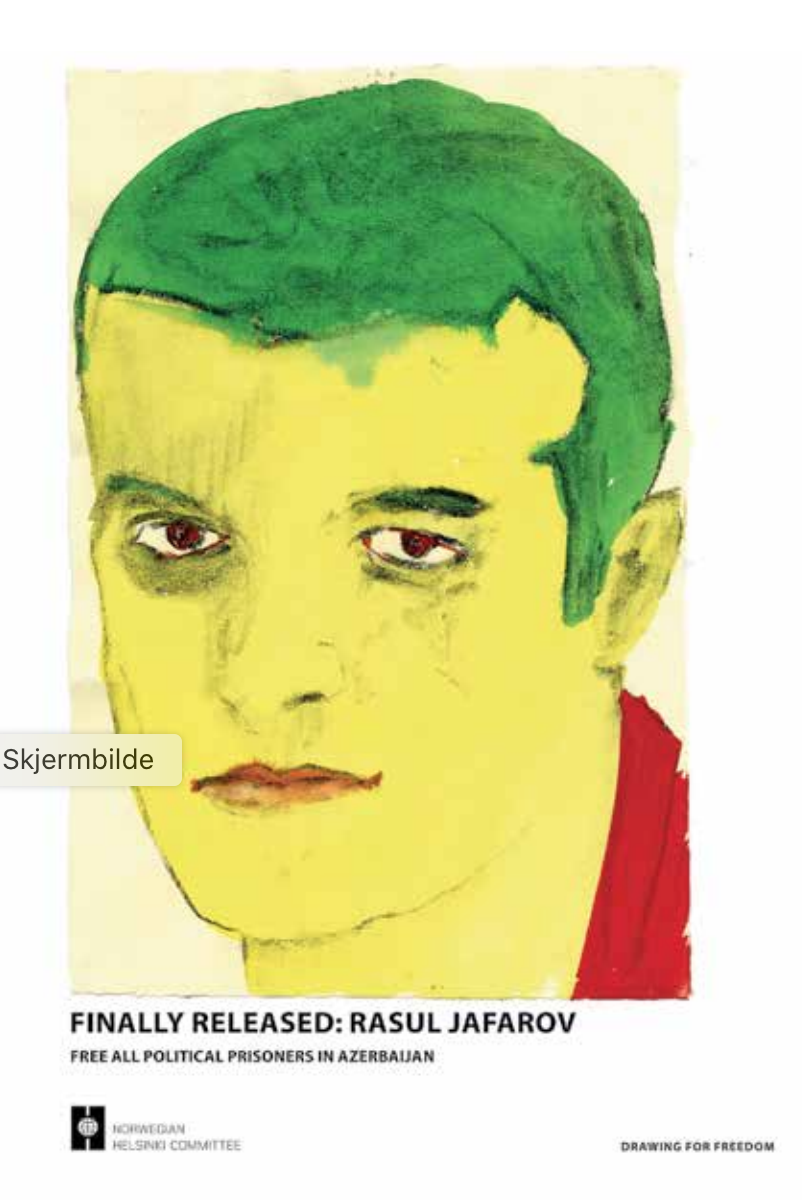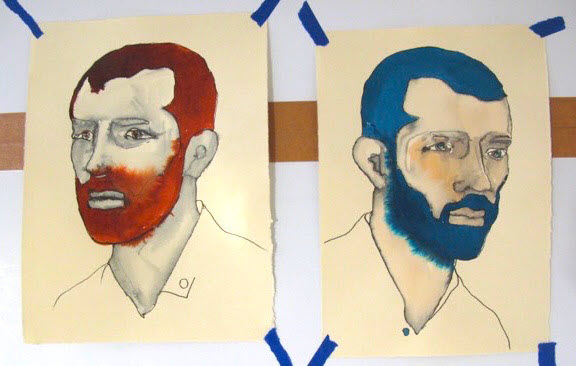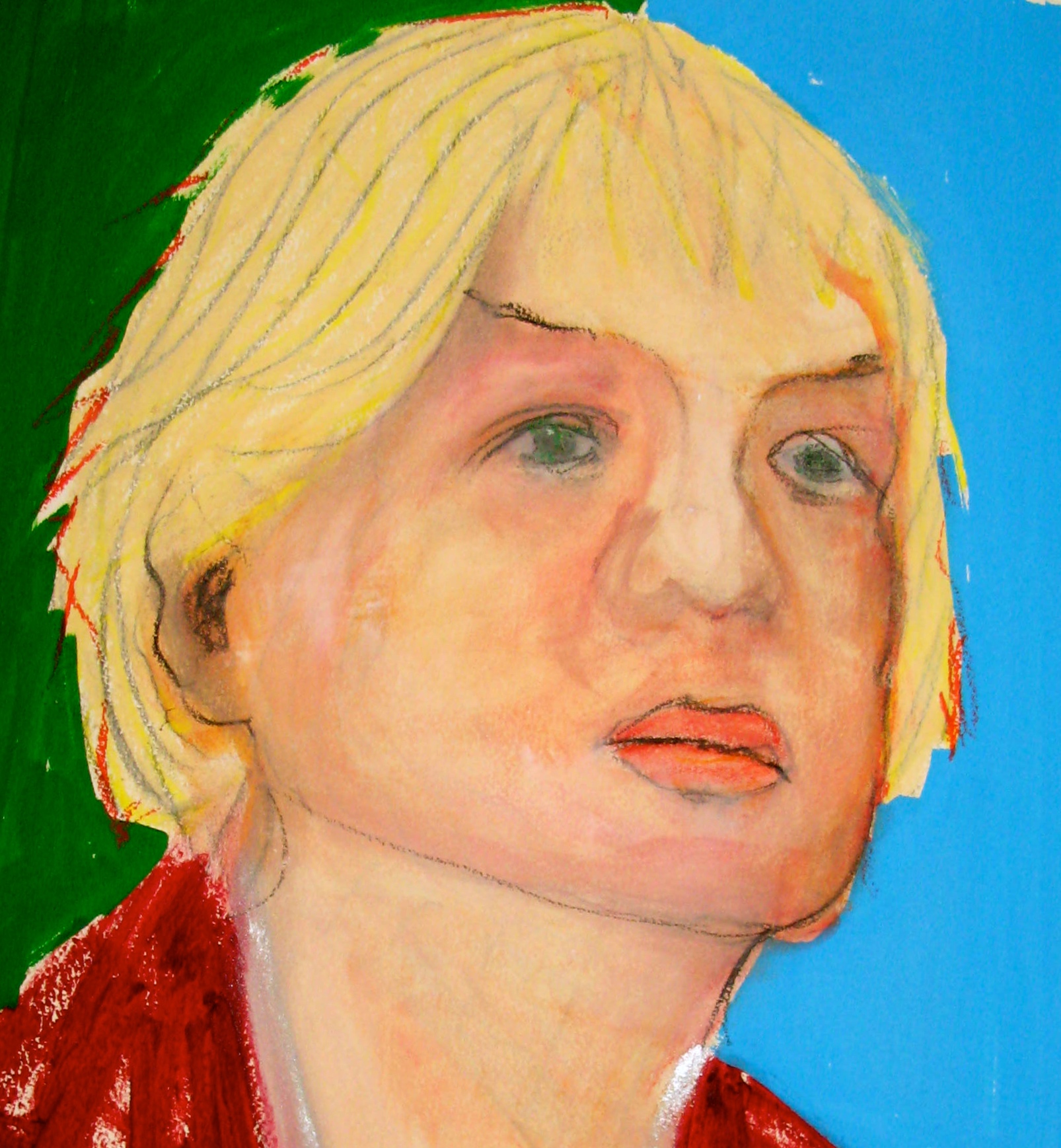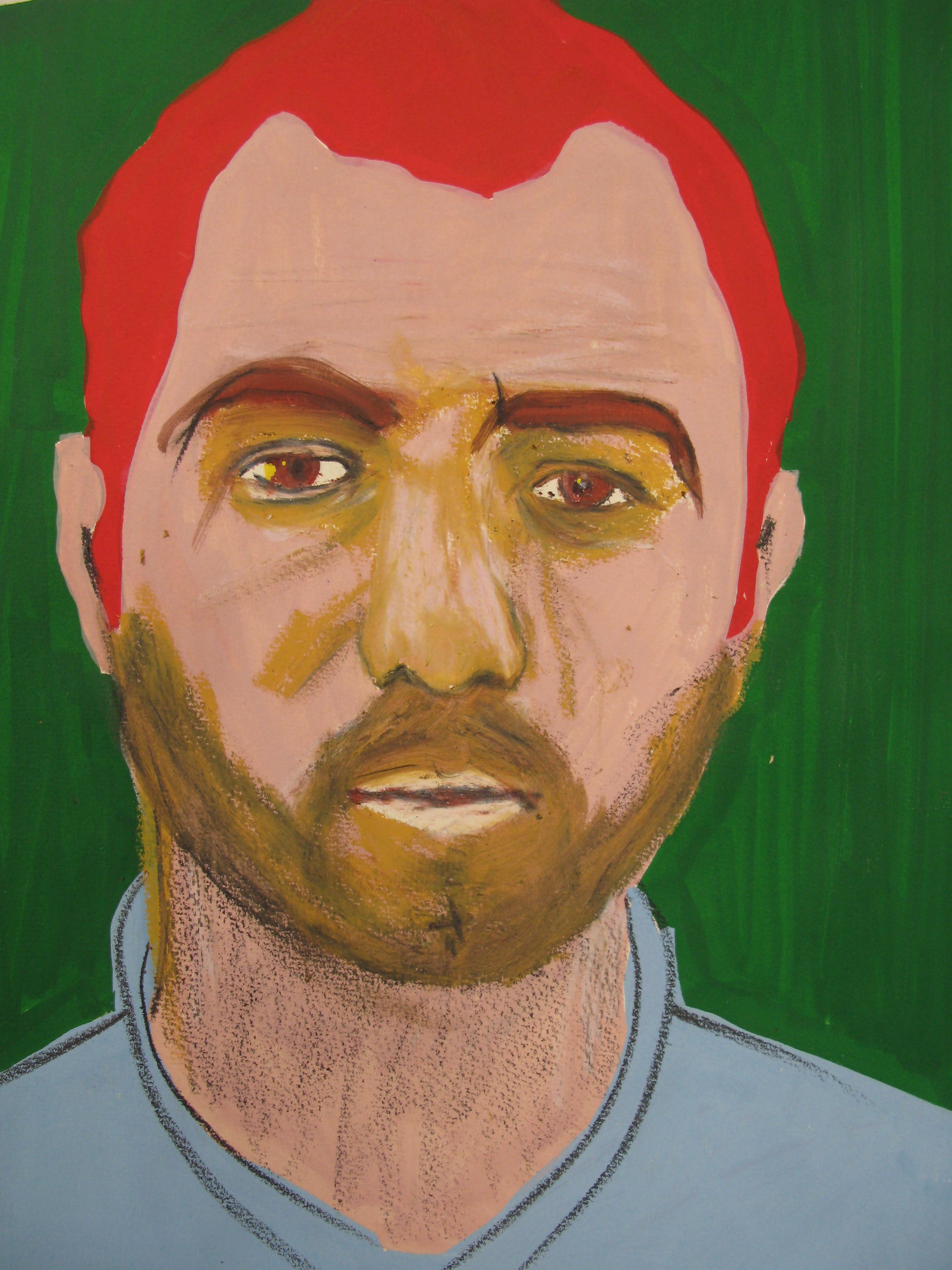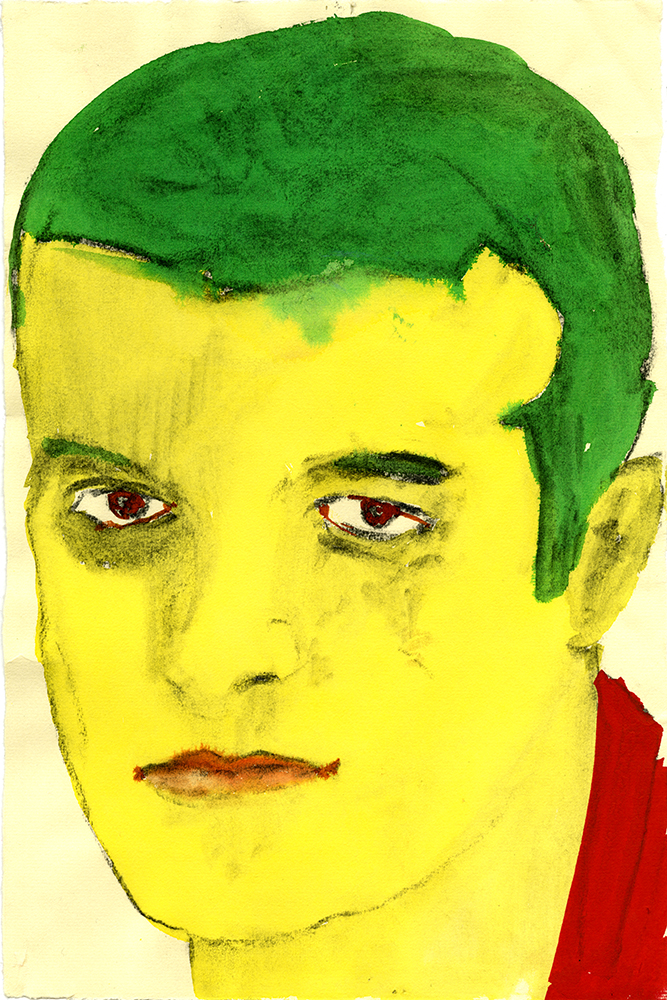Intrigued to be a part of Anne Marit Austbø and Jeannette Christensens workshop at KHIO called Drawing For Freedom, where we, togeteher with students tried to make portraits of political prisoners in Azerbadjan, to see if we could help releasing them by promoting portraits of them
Hans Adell, Erla Audunsdottir, Julia Alfe Bylund, Øyvor Hansen Engen, Therese Frisk, Aksel Octavius Norreen Hauklien, Amanda Hårsmar, Heidi Klemetsen, Anna Knappe, Kachun Lay, Janne Maria Lysen, Anna Sofie Mathiasen, Nasim Iranpour Mashak, Lykourgos Porfyris, Elisabeth Samstad, Erle Saxegaard, Love Terins, Linnea Vestre, Morten Jensen Vågen and Suzannah Rehell Øistad, Terje Nicolaisen, Jeanette Christensen and Anne Marit Austbø
The art project” Drawing for Freedom” is a cooperation between the Norwegian human rights organization the Norwegian Helsinki Committee (NHC) and the Academy of Fine Art of the Oslo National Academy of the Arts (KHiO).
The thematic focus of the project is political prisoners in Azerbaijan. The project has a clear activist profile, and is linked to a campaign by human rights groups to free all political prisoners in Europe.
During the fall semester of 2015, 20 students at the Academy of Fine Art participated in the class ”Drawing as a political tool”: During two 5-day workshops students met with a former political prisoner from Azerbaijan, an activist in exile, a relative of political prisoners currently in jail, and experts on Azerbaijan/oil states/human rights from the Norwegian Helsinki Committee. Norwegian artists with experience with political art/drawing portraits were also involved: Terje Nicolaisen, Morten Krohg, Shwan Dler Qaradaki and Lotte Konow Lund. Terje Nicolaisen was heavily involved in the creative process, also with his own contribution of works.
The works produced by the participants in the project have been printed on campaign material (post cards and posters) used internationally, and have been exhibited at events in Belgrade, Stockholm, Paris and Oslo. Azerbaijan has generously donated to a number of French cultural and art institutions, including the Cathedral in Strasbourg, the Palace of Versailles and the Louvre. In September 2015, Azerbaijan´s first lady opened a photo exhibition named “Azerbaijan – Land of Tolerance” at the city hall of Paris´s first arrondissement. It was therefore symbolically important when “Drawing for Freedom” was shown for an extensive number of the French cultural elite at the main City Hall of Paris in December 2015.
Drawing for Freedom challenges the image of a prosperous and tolerant country that the Azeri government reportedly has spent billions of dollars to promote abroad. When Drawing for Freedom will be showed at Akershus Art Center in Norway September 2016 it will be open to the public. The facade of the building will be covered with a drawing of the government building in Baku. The audience is invited to enter, behind the facade and see what and who is there.
Artworks made during and after the workshops were exhibited at the City Hall of Paris in December 2015, and later in Stockholm in April 2016 at ”Defenders Day”, an event gathering human rights activists from all over the world. A selected number of works were also shown during the “OSCE Civil Society Parallel Conference 2015”, 1-2 December 2015 in Belgrade, and at Oslo Freedom Forum in May 2016.
In September –October 2016 ”Drawing for Freedom” will be exhibited at Akershus Art Centre in Norway. The Norwegian, Swedish, Danish, Finnish and Estonian delegations to the Parliamentary Assembly of the Council of Europe (PACE) stand behind an application to show “Drawing for Freedom” at the premises of the Council of Europe in Strasbourg in January 2017.
During the time span of the project the number of political prisoners in Azerbaijan was reduced from almost 100 to around 70. For more information about political prisoners in Azerbaijan and the campaign to release them, see: www. nopoliticalprisoners.org
The art project was initialized by Anne Marit Austbø, artist, political scientist and former NHC employee, developed in close cooperation with artist and professor Jeannette Christensen at the Academy of Fine Art, KHiO and Berit Lindeman, Head of information and Senior Advisor at NHC.
The project has received funding from the Norwegian Fritt Ord Foundation and Oslo National Academy of the Arts (KHiO).
BACKGROUND AND PROCESS
The author Siri Hustvedt writes: “When I draw what I see, I touch the thing I am looking at with my mind [- ] it is as if my hand is caressing its outline». What does it mean to touch something “with my mind”, and what are the consequences when you choose to draw another human being? Can choosing to draw another person help us to relate and open up to a form of empathy in ourselves?
The highly acclaimed painter Marlene Dumas has emphasized the importance of drawing and painting (the physicality of the human touch) in a time dominated by digital photos and mass media. Drawing requires the attention of the artist over a certain period of time. The process of drawing can be seen as an interaction between the artist and the object that is being drawn. It is often stated that to draw is to see. This statement is perhaps particularly relevant when the drawings are of political prisoners whom a repressive regime wants us not to see, or to see a twisted image of. However, can artists enter the jungle of political images as activists without losing artistic freedom and risking becoming tools of interests they cannot always perceive?
These were thoughts and questions that made Austbø suggest a joint project between between the Norwegian Helsinki Committee (NHC), a human rights group, and the Academy of Fine Arts in Oslo. She had for several years been working for the NHC as a political scientist, before embarking on a career in art, and was present when the NHC awarded its bi-annual
human rights prize to political prisoners in Azerbaijan in November 2015. She knew that there was corruption and human rights abuse in Azerbaijan, but was not aware of the extent and methods of repression.
The government seemed to take care into creating twisted images. People who voiced dissent with the (corrupt) government were systematically portrayed as traitors, drug dealers, hooligans or other criminals, and arrested en masse on fraud charges. Sometimes the authorities would use strong imagery, like when released political prisoners (often after having written a letter of clemency) were made to bow before the statue of the president´s father, and the photos of this situation was published in the press. A sex-video of one of the country´s most famous investigative journalists, Khadija Ismayilova, was posted on the internet in an attempt to blackmail and smear her.
Perhaps drawing these people could mean a recognition of their existence, be a way of saying “we see you”, a way of expressing solidarity with the prisoners, their families and supporters. And also a way of saying “we see them”. Drawing for Freedom is linked to other efforts by several European NGOs to free these prisoners. It is an activist art project in the sense that it explicitly aims at inciting action by complementing more traditional means and language of activism.
